标签:02 文件 字节 read day35 String FileOutputStream IO 读取
JavaOI流02
4.常用的类
4.1文件字节流输入流-FileInputStream
InputStream抽象类是所有类字节输入流的超类
InputStream常用的子类:
- FileInputStream:文件字节输入流
- BufferedInputStream:缓冲字节输入流
- ObjectInputStream:对象字节输入流
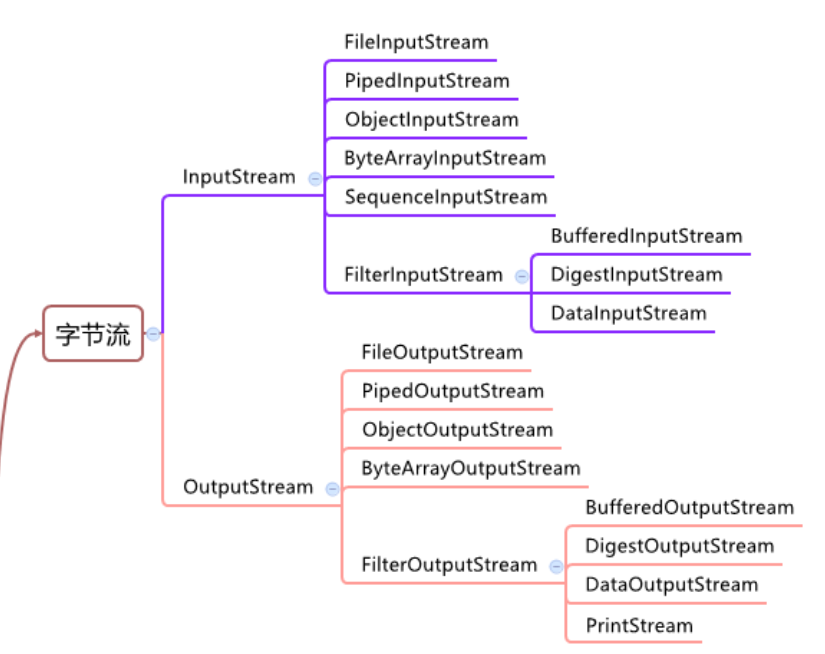
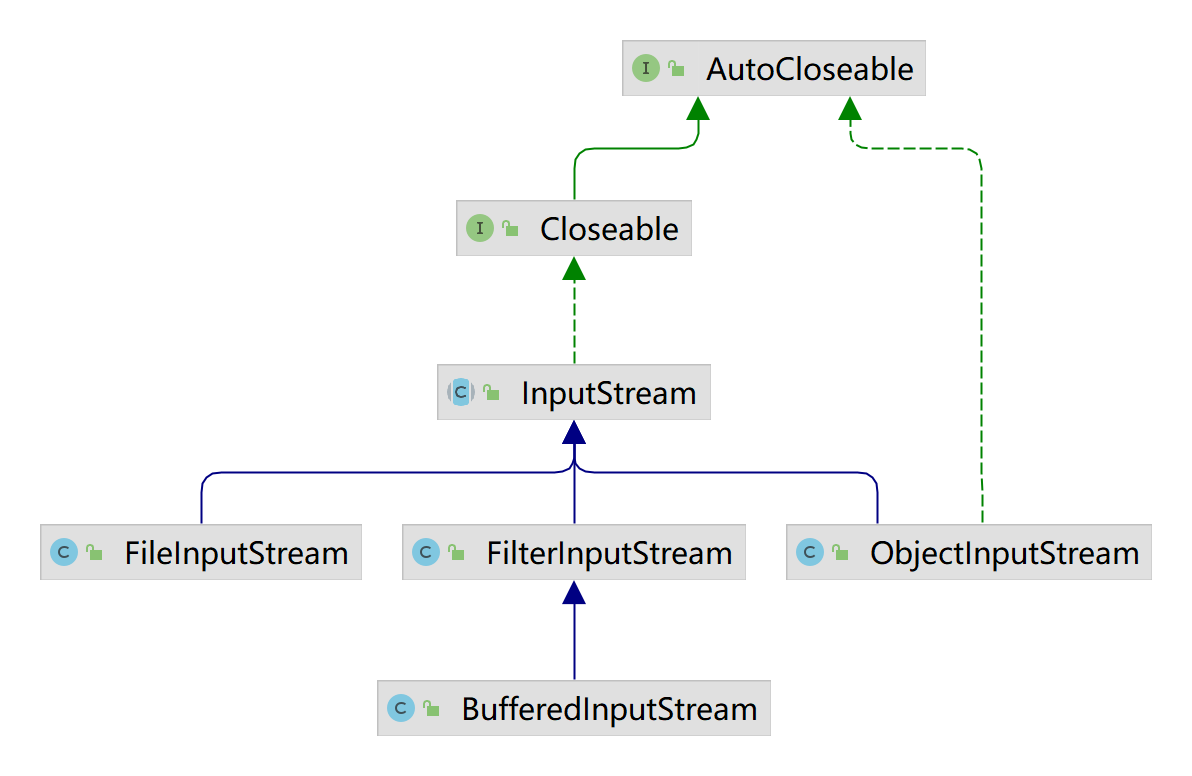
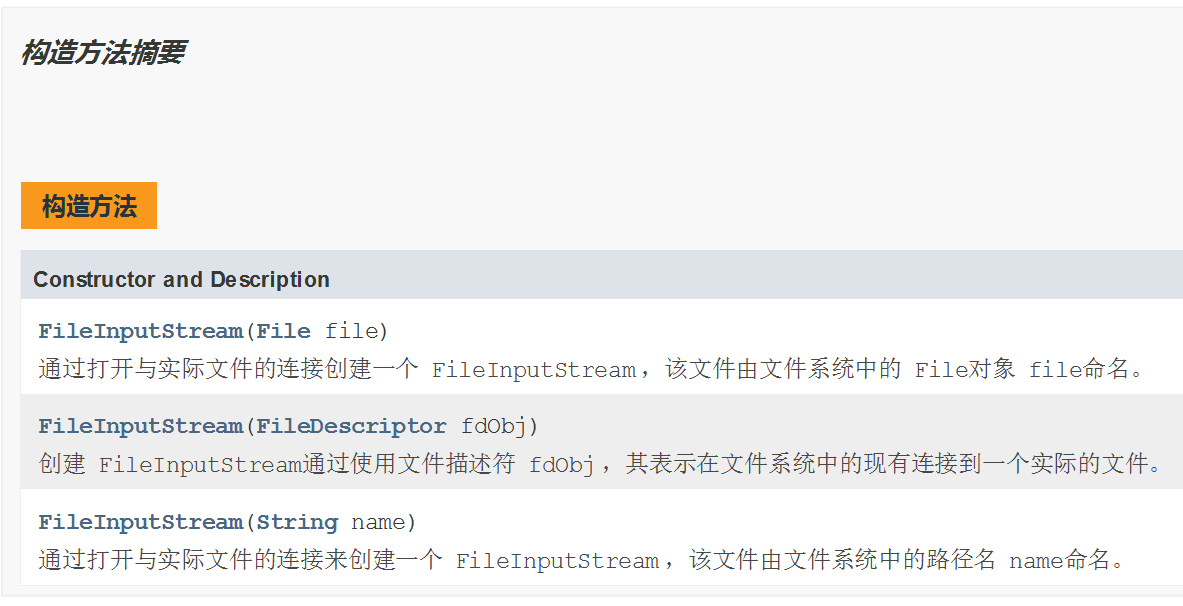
常用方法:
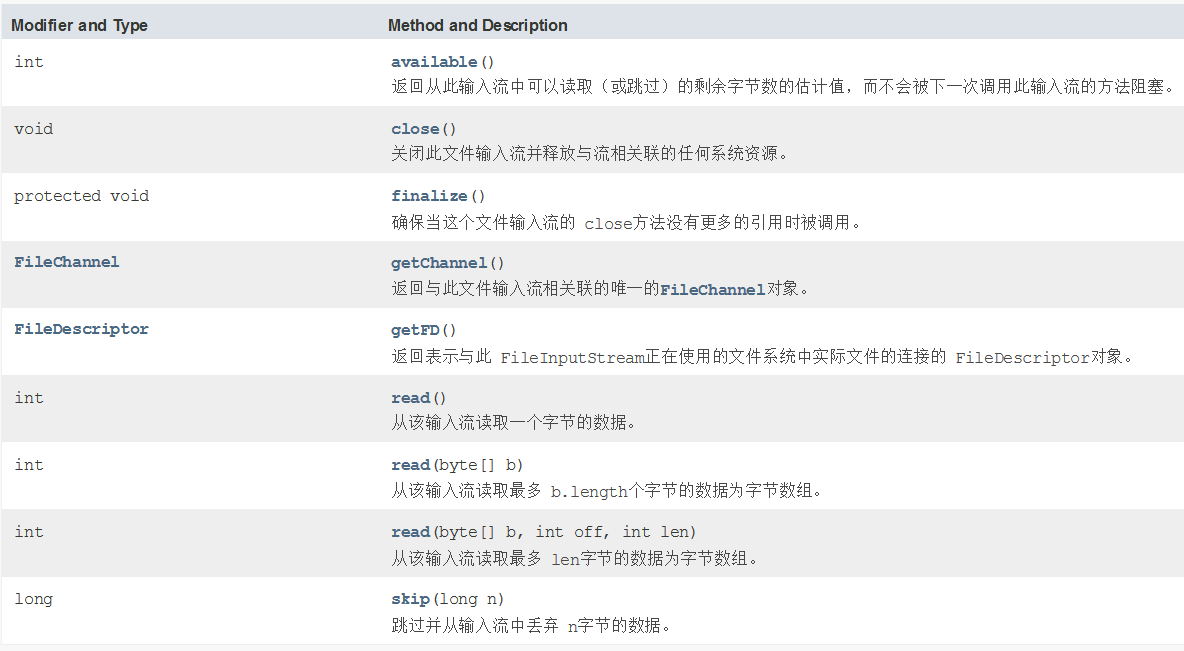
输入流的唯一目的是提供通往数据的通道,程序可以通过这个通道读取文件中的数据。
read方法提供了一个从输入流读取数据的基本方法,read方法的格式如下:
| 返回值 | 方法 | 说明 |
|---|---|---|
| int | read( ) | 从输入流中读取数据的下一个字节 |
| int | read(byte[ ] b) | 从输入流中读取一定数量的字节,并将其存储在缓冲区数组 b 中。以整数形式返回读取的字节数。 |
| int | read(byte[ ] b, int off, int len) | 将输入流中最多 len 个数据字节读入 byte 数组。尝试读取 len 个字节,但读取的字节也可能小于该值。以整数形式返回实际读取的字节数。 |
| void | close( ) | 关闭流 |
注:read方法在从输入流中读取源中的数据时,如果到达源的末尾,便会返回-1。
FileInputStream流顺序地读取文件,只要不关闭流,每次调用read方法就顺序的读取源中其余的内容,直至源的末尾或流被关闭。
例子:
package li.io.inputstream_;
import org.junit.jupiter.api.Test;
import java.io.FileInputStream;
import java.io.IOException;
//演示FileInputStream的使用(字节输入流 文件-->程序)
public class FileInputStream_ {
public static void main(String[] args) {
}
/**
* 演示读取文件
* read():单个字节的读取,效率较低
*/
@Test
public void readFile01() {
String filePath = "d:\\hello.txt";
int readData = 0;
FileInputStream fileInputStream = null;
try {
//创建了FileInputStream对象,用于读取文件
fileInputStream = new FileInputStream(filePath);
//read()方法:从该输入流读取一个字节的数据。 如果没有输入可用,此方法将阻止。
//如果返回-1,则表示达到文件的末尾,表示读取完毕
while ((readData = fileInputStream.read()) != -1) {
System.out.print((char) readData);//转成char显示,因此如果文件里面有中文字符(每个中文字符占三个字节),显示的时候就会出现乱码
}
} catch (IOException e) {
e.printStackTrace();
} finally {
//关闭文件流,释放资源
try {
fileInputStream.close();
} catch (IOException e) {
e.printStackTrace();
}
}
}
/**
* 使用read(byte[] b)读取文件,提高效率
*/
@Test
public void readFile02() {
String filePath = "d:\\hello.txt";
//字节数组
byte[] buf = new byte[8];//一次读取8个字节
int readLen = 0;
FileInputStream fileInputStream = null;
try {
//创建了FileInputStream对象,用于读取文件
fileInputStream = new FileInputStream(filePath);
//read(byte[] b)方法:从该输入流读取最多b.length字节的数据到字节数组。
//如果返回-1,则表示达到文件的末尾,表示读取完毕
//如果读取正常,返回实际读取的字节数
while ((readLen = fileInputStream.read(buf)) != -1) {
System.out.print(new String(buf, 0, readLen));//显示
}
} catch (IOException e) {
e.printStackTrace();
} finally {
//关闭文件流,释放资源
try {
fileInputStream.close();
} catch (IOException e) {
e.printStackTrace();
}
}
}
}
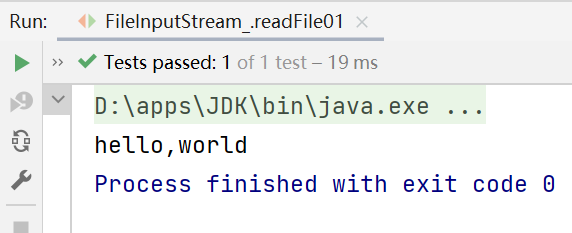
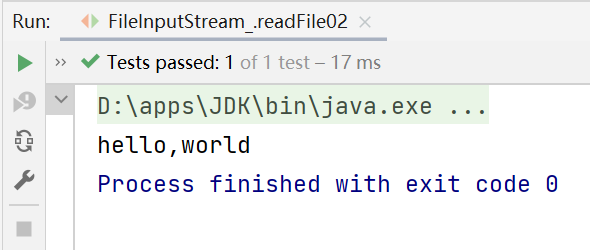
4.2文件字节输出流-FileOutputStream
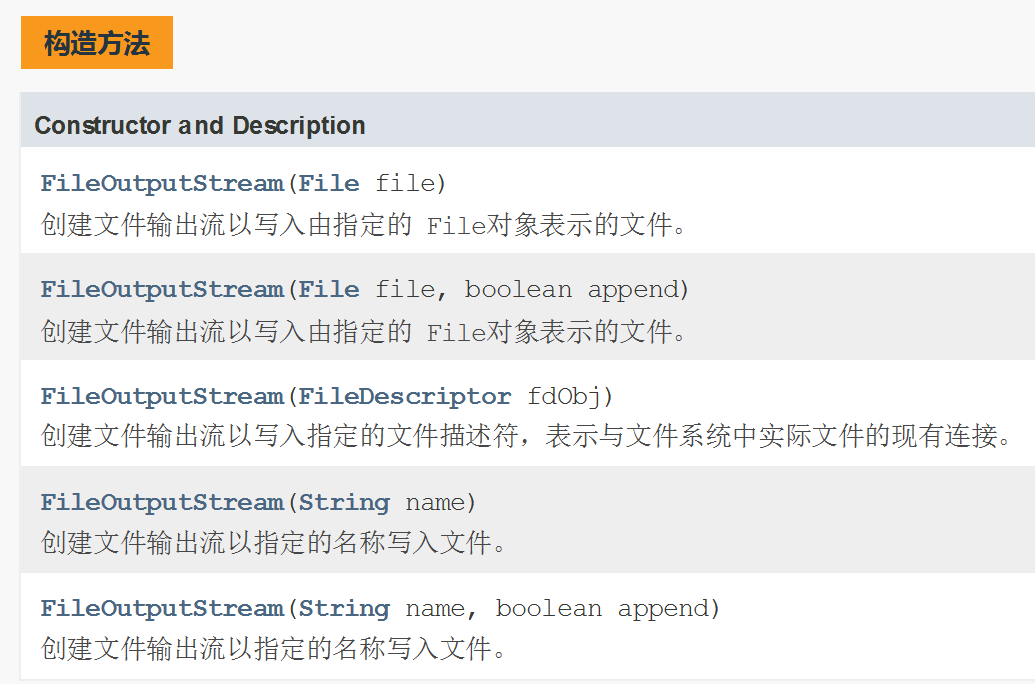
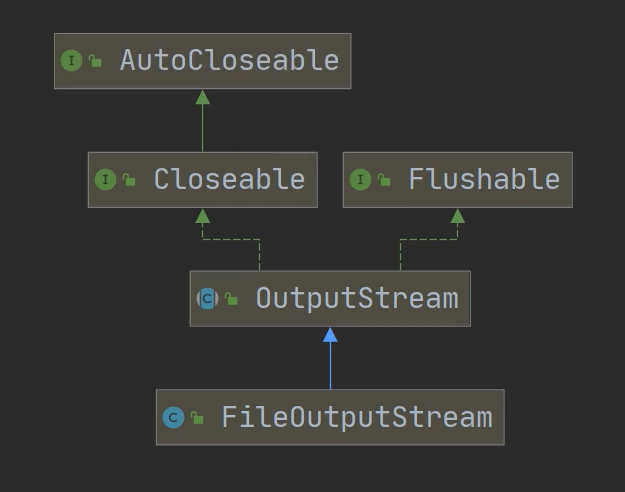
常用方法:

例子:FileOutputStream应用实例1
要求:请使用FileOutputStream在a.txt文件中写入“hello,world”。如果文件不存在,就先创建文件。
(注意:前提是目录已经存在)
package li.io.outputstream_;
import org.junit.jupiter.api.Test;
import java.io.FileOutputStream;
import java.io.IOException;
public class FileOutputStream_ {
public static void main(String[] args) {
}
/**
* 演示使用FileOutputStream将数据写到文件中,如果该文件不存在,则先创建文件
*/
@Test
public void writeFile() {
String filePath = "d:\\a.txt";
//创建FileOutputStream对象
FileOutputStream fileOutputStream = null;
try {
//得到一个FileOutputStream对象
/*
如果是以new FileOutputStream(filePath)的方式创建对象,
则当写入内容时,会覆盖原来的内容
如果是以new FileOutputStream(filePath,true)的方式创建对象,
则当写入内容时,是在旧内容的末尾追加新内容
*/
fileOutputStream = new FileOutputStream(filePath,true);//以追加的形式去添加新内容
//写入一个字节
//fileOutputStream.write('H');
//写入字符串
String str = "Hello,Jack!";
//String的getBytes方法可以将字符串转为字符数组
// fileOutputStream.write(str.getBytes());
/*
write(byte[] b,int off,int len)
将len长度的字节从位于偏移量off的指定字节输入写入此文件输出流
*/
fileOutputStream.write(str.getBytes(), 0, 4);
} catch (IOException e) {
e.printStackTrace();
} finally {
try {
fileOutputStream.close();
} catch (IOException e) {
e.printStackTrace();
}
}
}
}
追加前: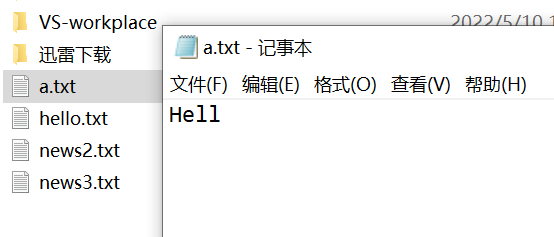
追加后: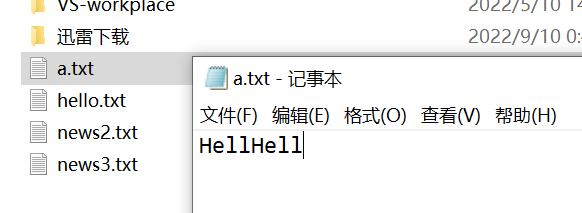
4.2.1FileInputStream&&FileOutputStream
应用实例2:文件拷贝
要求:完成文件拷贝,将d:\Koala.png拷贝到d:\Koala222.png

在完成程序时,为防止读取的文件过大,应该是每读取部分数据,就写入到指定文件,这里使用循环。
package li.io.outputstream_;
import java.io.FileInputStream;
import java.io.FileOutputStream;
import java.io.IOException;
public class FileCopy {
public static void main(String[] args) {
//完成文件拷贝,将c:\\Koala.png拷贝到d:\\
/*
思路分析:
1.创建文件的输入流,将文件读入到程序
2.创建文件的输出流,将读取到的文件数据写入指定的文件
*/
String srcFilePath = "d:\\Koala.png";
String destFilePath = "d:\\Koala222.png";
FileInputStream fileInputStream = null;
FileOutputStream fileOutputStream = null;
try {
fileInputStream = new FileInputStream(srcFilePath);
fileOutputStream = new FileOutputStream(destFilePath, true);
//定义一个字节数组,提高效率
byte[] buf = new byte[1024];//1K
int readLen = 0;
while ((readLen = fileInputStream.read(buf)) != -1) {
//读取到后,就通过 fileOutputStream写入到文件
//即,是一边读一边写)
fileOutputStream.write(buf, 0, readLen);//一定要使用这个方法
}
System.out.println("拷贝成功~");
} catch (IOException e) {
e.printStackTrace();
} finally {
//关闭输入流和输出流,释放资源
try {
if (fileInputStream != null) {
fileInputStream.close();
}
if (fileOutputStream != null) {
fileOutputStream.close();
}
} catch (IOException e) {
e.printStackTrace();
}
}
}
}
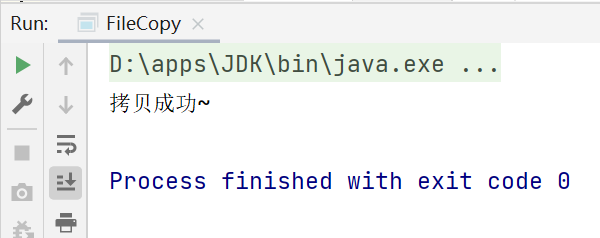
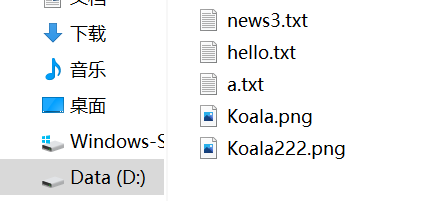
4.3文件字符流FileReader&FileWriter
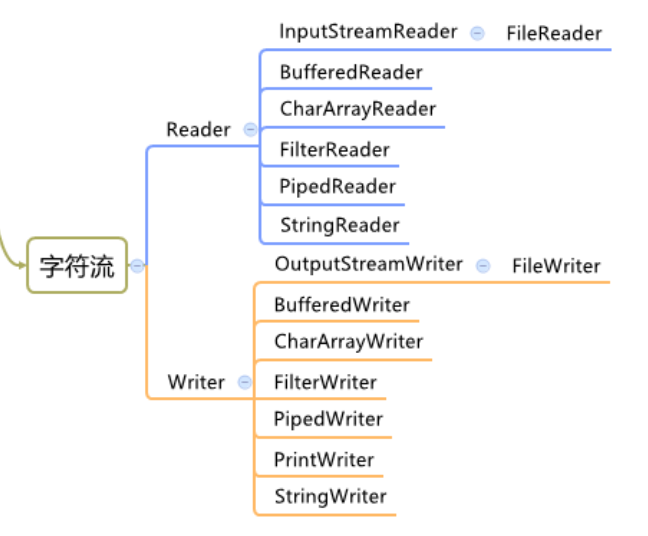

FileReader和FileWriter介绍:
FileReader和FileWriter是字符流,即按照字符来操作io
-
FileReader相关方法:
- new FileReader(String/File)
- read:每次读取单个字符,返回该字符,如果到文件末尾返回-1
- read(char[]):批量读取多个字符到数组,返回读取到的字符数,如果到文件末尾就返回-1
相关API:
- new String(char[]):将char[]转换成String
- new String(char[],off,len):将char[]的制定部分转换成String
-
FileWriter常用方法:
- new FileWriter(File/String):覆盖模式,相当于流的指针在首端
- new FileWriter(File/String,true):追加模式,相当于流的指针在尾端
- writer(int):写入单个字符
- writer(char[]):写入指定数组
- writer(char[],off,len):写入指定数组的指定部分
- writer(String):写入整个字符串
- writer(String,off,len):写入指定字符串的指定部分
相关API:String类:toCharArray:将String转换成char[]
注意:FileWriter使用后,必须要关闭(close)或刷新(flush),否则写入不到指定的文件!
标签:02,文件,字节,read,day35,String,FileOutputStream,IO,读取 来源: https://www.cnblogs.com/liyuelian/p/16678379.html
本站声明: 1. iCode9 技术分享网(下文简称本站)提供的所有内容,仅供技术学习、探讨和分享; 2. 关于本站的所有留言、评论、转载及引用,纯属内容发起人的个人观点,与本站观点和立场无关; 3. 关于本站的所有言论和文字,纯属内容发起人的个人观点,与本站观点和立场无关; 4. 本站文章均是网友提供,不完全保证技术分享内容的完整性、准确性、时效性、风险性和版权归属;如您发现该文章侵犯了您的权益,可联系我们第一时间进行删除; 5. 本站为非盈利性的个人网站,所有内容不会用来进行牟利,也不会利用任何形式的广告来间接获益,纯粹是为了广大技术爱好者提供技术内容和技术思想的分享性交流网站。
